It took almost 50 years for the vampire Lestat de Lioncourt, created by an inspired and sad (at the time) Anne Rice, to find unanimity and success in books and on screen. Not for lack of trying! Thirty years ago, in 1994, director Neil Jordan managed to bring together a unique cast, led by Tom Cruise and Brad Pitt, with actors such as Antonio Banderas, Stephen Rhea, Thandwie Newton and Kirsten Dunst, but did not achieve unanimous approval from critics or audiences. The series Interview with the Vampire, on air since 2022, changed everything and seems to have ended the curse: it is now one of the favorites around the planet. Finally?
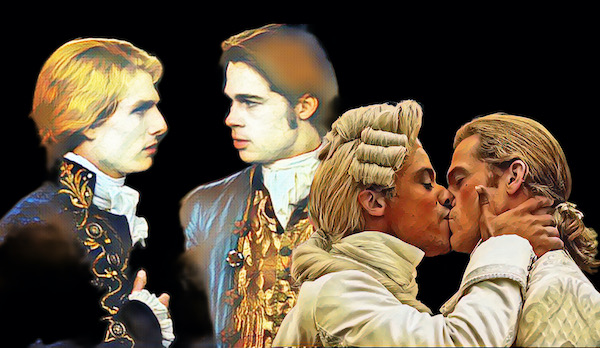
A bisexual, rocker, and popular vampire
When Anne Rice released the book in 1976, after a period of mourning over the loss of a child, she achieved great success for several reasons, both literary and cultural. With a new perspective on the myth of the vampire, somewhat overlooked at the time, she inserted complexity into the story, making them more human than any other author, with emotions, moral and existential dilemmas. Rather than just being monsters to be feared, Rice’s vampires are tragic and fascinating characters.
Many readers and critics were also fascinated by the way the author approached vampire sexuality, introducing fluidity into the time that was innovative and, therefore, considered controversial by some. Eroticism and sexual ambiguity were bold and challenging to the social norms of the 1970s and 1980s and considered disturbing or inappropriate. Over time, the series gained a cult status and had a significant impact on pop culture and vampire literature, paving the way for a new era of similar narratives, such as the Buffy the Vampire Slayer and Twilight series.
As we know, Louis de Pointe du Lac is the vampire interviewed in the title and the format allows us to follow his thoughts and feelings, in an introspective and philosophical narrative about the nature of immortality. But it’s the vampire who transformed Louis, Lestat de Lioncourt, who fascinates us most. As Louis whines about his constant internal struggle, his vision of Lestat highlights his charisma and sexual and moral complexities. Equally unforgettable is the young vampire Claudia, trapped forever in the body of a child, who also adds a layer of tragedy and depth to the story, but immediately it is Lestat who becomes one of the most iconic characters in Anne Rice‘s universe, appearing again in other books after Interview with the Vampire, becoming the protagonist in the Vampire Chronicles series.
Described as extremely attractive and charismatic. He has a magnetic presence that attracts humans and vampires alike. His physical appearance is striking, with blond hair and blue eyes, and he uses his beauty and charm to manipulate and seduce. Furthermore, Lestat stands out as a rebel, defying the norms and traditions of older vampires and often acting on his own desires and impulses, in constant conflict with other vampires. A classic antihero, with actions that are usually morally ambiguous, he is capable of committing acts of great cruelty and violence and yet also has moments of compassion and kindness, making him a deeply complex character. A dream for any actor other than Daniel Day-Lewis.
A cult film, a rejected star, and a behind-the-scenes drama
In 1994 Tom Cruise was already the highest paid star in Hollywood and also the most beloved. The decade was marked by his pursuit of both artistic growth, where he worked with the best and most revered directors, and starred in films that exploded at the box office. A then-young Brad Pitt gained strength in the same period, achieving similar status with greater ease.
When Neil Jordan announced that he would film Interview with the Vampire it was a kind of modern Gone with the Wind: everyone had a passionate opinion about who should be who. River Phoenix was hired to play the interviewer but tragically died weeks before recording began and was replaced by Christian Slater. Given Brad Pitt‘s maximum popularity at the time, they applauded his choice as Louis. The unknown Kirsten Dust debuted as Claudia, and Antonio Banderas (who wasn’t fluent in English yet) came in as Armand, but Lestat was a complex adventure.
The most respected and beloved actor was Daniel Day-Lewis, who had recently won an Oscar and EVERYONE wanted him as a vampire, whether in Francis Ford Coppola‘s Dracula or Interview with the Vampire. For both projects, Lewis gave a resounding “no, thank you”. And the public reacted aggressively to the “substitutes”.
While Gary Oldman wasn’t a name you’d find he received a lot of recognition and with that, somehow, he managed to silence the critics with an anthological performance that made him THE actor after Daniel Day-Lewis, the choice of Neil Jordan as Lestat to this day generates discussion. After all, it was none other than Tom Cruise.
A performance to silence the critics
Tom Cruise was the opposite of what people expected from Lestat – from his height to his looks – and no one saw him playing a fluid vampire, who embarks on a centuries-long romance with the tortured Louis. But Neil Jordan saw otherwise.
As I mentioned, the 90s marked what many saw as Tom’s quest for the Oscars. He was determined to be recognized by the Academy, but he became a kind of Cary Grant: whoever worked with him won, but he was snubbed. Obviously, even though he was still dealing with rumors about his own sexuality (something that seems forgotten), Tom Cruise wanted to be Lestat. And no director could deny at least a chat with him. This meeting was decisive in convincing Neil Jordan, as he recalled in his biography years later.
The director met the actor twice at his home in Hollywood and realized he was suitable for the role. “[Tom] had to live a life away from the eyes of others. He had made a contract with the hidden forces, whatever they were. He had to hide in the shadows, even in the Hollywood sunlight. He would be forever young. He was a star. He could very well be Lestat,” he wrote.
The announcement generated a negative reaction from fans of the book, Cruise fans, the cast (Brad Pitt only accepted the role because he thought he would work with Daniel Day-Lewis, according to the director), and in particular aroused the ire of Anne Rice. The fact that the Irish actor wasn’t interested in the role and declined the invitation to star in the film wasn’t enough to calm things down. “The whole world said, ‘You’re wrong,’” said Jordan, who defends his choice to this day by highlighting Tom Cruise’s talent as an actor, not just as a star.
“Anne went on air, saying it was like I cast Edward G Robinson as Rhett Butler. But she was wrong and later grew up enough to admit it.” (Note for young people: Robinson was a short and unattractive actor while Clark Gable, who ended up being in Gone with the Wind, was the Brad Pitt of the 1940s in Hollywood. The comparison was aggressive and crude for Tom Cruise, although Robinson was a great actor).
In fact, when she saw Cruise’s work, the author published an ad apologizing and praising his performance. For many, the best of the star’s career.
The same cannot be said for Pitt. His bad mood is blatant and they said at the time that it was because he was fighting with a jealous and insecure Tom Cruise backstage. It’s not what Neil Jordan described in his book. The director claims that he was exhausted from having to edit many films, especially the work on Legends of the Fall and that he was exhausted by night filming as well as the character’s anguished nature. “The character’s passivity turned him off,” he explained.
In the digital age, Lestat finally wins approval
When AMC announced that it would film Anne Rice‘s “immortal universe”, starting with Interview with the Vampire, skeptics turned their noses up again. The challenge was incredible because the work remains legendary, the 1994 film attempt is closer to failure than cult and once again there would be the dilemma of finding a Lestat that lived up to the unrealistic expectations. Showrunner Rolin Jones (Perry Mason) shut everyone up with an inclusive cast and adaptations that work.
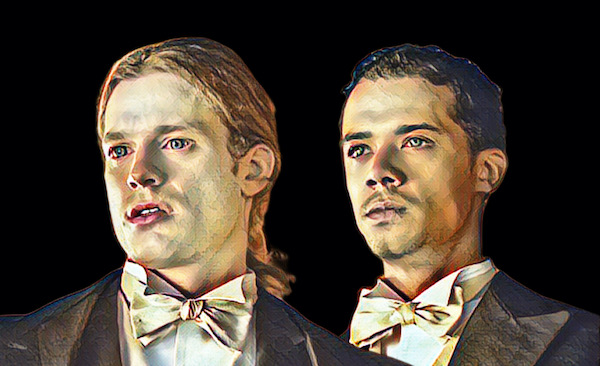
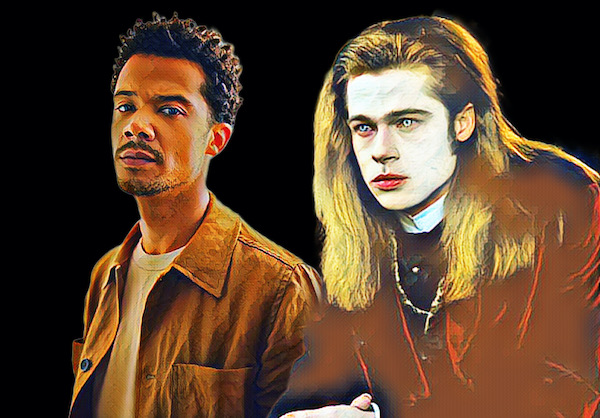
Set 50 years after the events of the film, interviewer Daniel Molloy (Eric Bogosian) remains obsessed with deciphering the story the recluse Louis de Pointe du Lac (Jacob Anderson, always remembered for Game of Thrones) tried to tell. Now, amid a pandemic that has destroyed the world’s sense of social order, Louis decides to resume the interview once the new world stage can finally hear his story.
With this, we travel back and forth in time, with the comfort of hour-long episodes to engage with the characters as we do in the book. Yes, the inclusion made some adjustments, but there is fidelity to the original amid this paradox. Changing Louis from a depressed plantation owner to an ambitious, closeted black man helps us understand both Lestat’s attraction to him and vice versa.
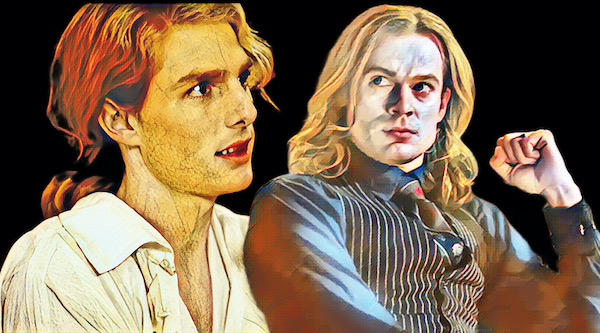
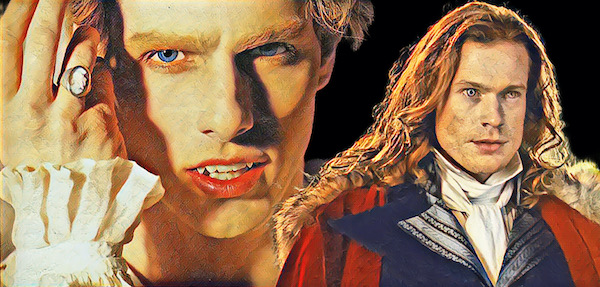
Australian Sam Reid has been winning over everyone as a seductive, passionate, and controversial Lestat. His challenge was immense given the character’s heavy history and the inevitable comparisons with Tom Cruise, but he already took the role for himself. Just as Anderson is incredible as the unstable Louis, ruthless as a businessman and emotionally insecure. Add to this a good script and great production quality and we have a success.
A third season has not yet been announced, but Rolin Jones has extended his contract with AMC which guarantees that we will have more. The next? Without a doubt, The Vampire Lestat, from 1985, delves into the past of the anti-hero vampire. And yes, there is already talk of a cross between characters in Mayfair Witches. Anne Rice passed away before this “reboot” was confirmed as a success, but her beloved and famous Lestat finally emerged from the shadows into glory. It’s about time!
Descubra mais sobre
Assine para receber nossas notícias mais recentes por e-mail.
